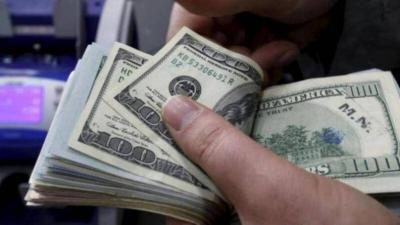No matter the twists and turns the dollar price experienced during 2022, and despite its temporary declines, the fixed outcome remained that it recorded an increase of over 42 percent from the end of 2021 until the last days of 2022. From the end of 2021 until the end of 2022, the exchange rate of the dollar against the lira rose from around 27,500 lira to over 47,000 lira (before retreating in the final days to about 43,000 lira, due to the Central Bank of Lebanon's decision to remove withdrawal limits on the Sayrafa platform). Between these two rates, there were many events that contributed in one way or another to changing the exchange rate. If the Lebanese lira lost a specific percentage of its value in 2022, it lost over 95 percent of its previous value (1,507 lira per dollar) since the beginning of the crisis in 2019 until today.
The dollar's exchange rate did not rise continuously. It declined at various points, albeit temporarily, influenced by specific events, such as government formation, before resuming its upward trajectory for three years until the last days of 2022. The surge in the dollar's price and the rapid collapse of the lira necessitated direct intervention from the Central Bank of Lebanon, not to protect the remaining value of the lira but to rein in the dollar's surge. The Central Bank has routinely issued circulars that many liken to "bankruptcy engineering," aiming to lower the exchange rate of the dollar, albeit temporarily. It often succeeded in this before the dollar resumed its rise.
The dollar surged at the beginning of 2022, reaching 34,000 lira for the first time, prompting the Central Bank to issue the famous Circular 161, which allowed depositors with accounts in lira or receiving salaries in lira to withdraw amounts from their deposits and salaries in US dollars at the rate of the Sayrafa platform. This circular created a positive shock among employees and depositors, leading to long lines at banks and ATMs as people sought to obtain dollars. This caused the dollar to decrease to around 28,000 lira.
The dollar then gradually resumed its rise, reaching approximately 38,000 lira by mid-2022, which led the Central Bank to issue subsequent decisions under Circular 161, opening the door for citizens across all categories to exchange amounts in lira for US dollars from banks with very high ceilings, based on the Sayrafa platform rate. As usual, the dollar's exchange rate temporarily decreased again, only to rise once more against the lira, with a significant difference at that phase being the depletion of billions of dollars for traders, brokers, and currency traders, who made millions of dollars in profits by exchanging currency with banks at rates lower than the actual market rate.
In November 2022, after the dollar price reached a record level of 40,000 lira, the Central Bank issued a statement on a holiday evening, announcing its cessation of purchasing dollars from the market, content with selling dollars through the Sayrafa platform. The central bank's decision indirectly confirmed that its purchasing dollars from the market was the main driver behind the dollar's rapid ascent. This decision accelerated the dollar's fall, dropping to 35,000 lira within hours.
Once again, the dollar resumed its gradual rise from the end of November until today, reaching record levels of 47,500 lira (just days before the end of 2022), unaffected by the injection of dollars into the market that coincided with the arrival of hundreds of thousands of Lebanese expatriates during the holidays. Observers attribute the continuous increase in the dollar's exchange rate recently, reaching huge levels, to several reasons, some of which have been entrenched since the start of the crisis and some are new.
These reasons driving the rapid collapse of the lira in recent months can be summarized as the increase in imports by traders, especially before the customs dollar was approved, alongside the massive injection of lira into the market to cover public sector salary increases and for the Central Bank to purchase dollars. This is reflected in the fluctuating numbers of its foreign reserves. Currency speculation also plays a significant role. Such speculation has consistently contributed to a substantial increase in the exchange rate, causing sudden drops.
Given the persistence of all these factors and the accompanying factors of the collapse for years, primarily the authorities' failure to formulate effective solutions to curb the ongoing decline, combined with the current political vacuum regarding the presidency and government, leaving the market at the mercy of traders and speculators who prey on the Lebanese lira amid the Central Bank's decisions and circulars, observers do not rule out the continuation of the dollar's rise into 2023.
However, its rise may take a slower trajectory following the Central Bank's recent decision, allowing all citizens to withdraw dollars based on the Sayrafa platform with high ceilings, which caused the dollar to finally retreat from its record level of 47,500 lira to around 44,000 lira.




